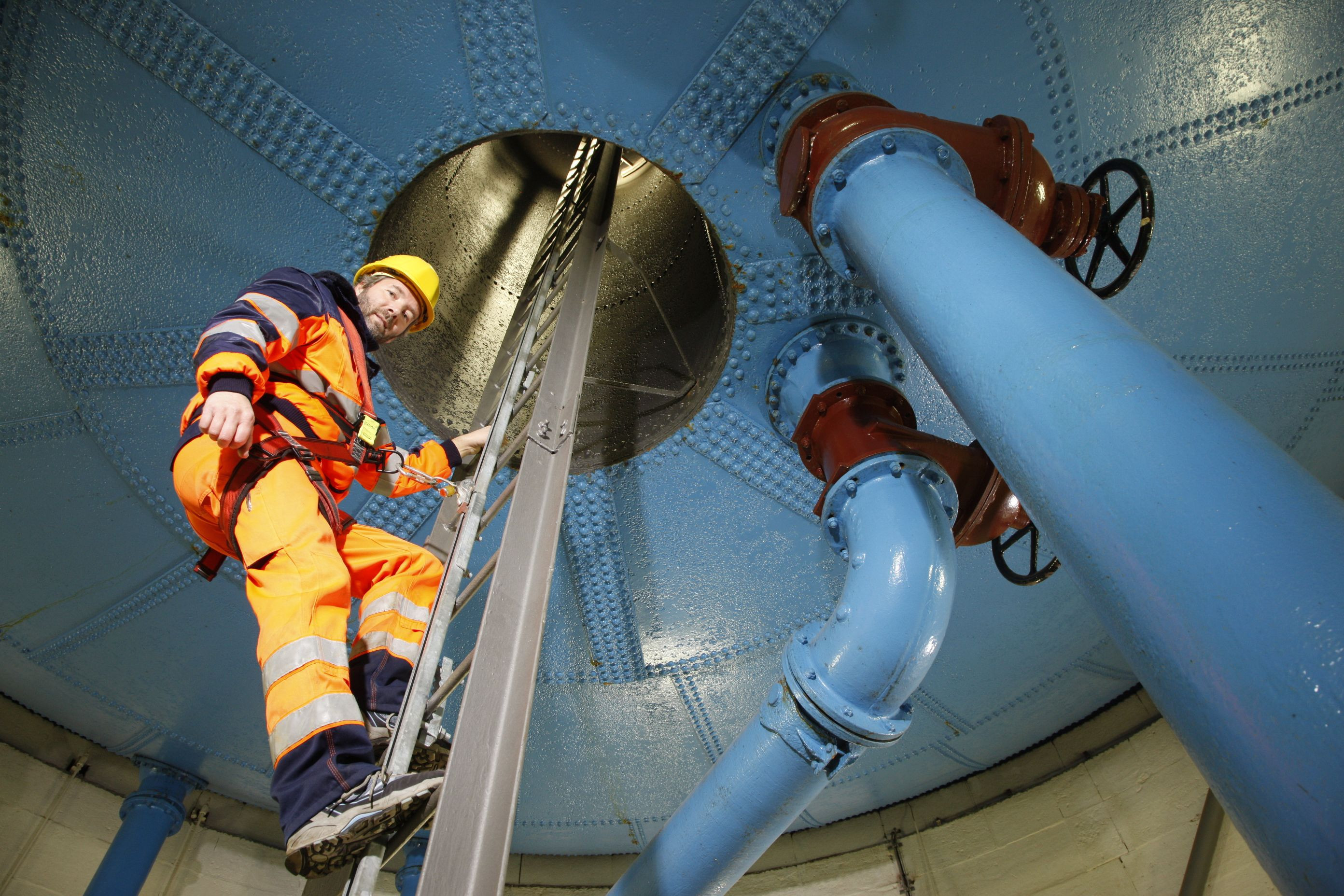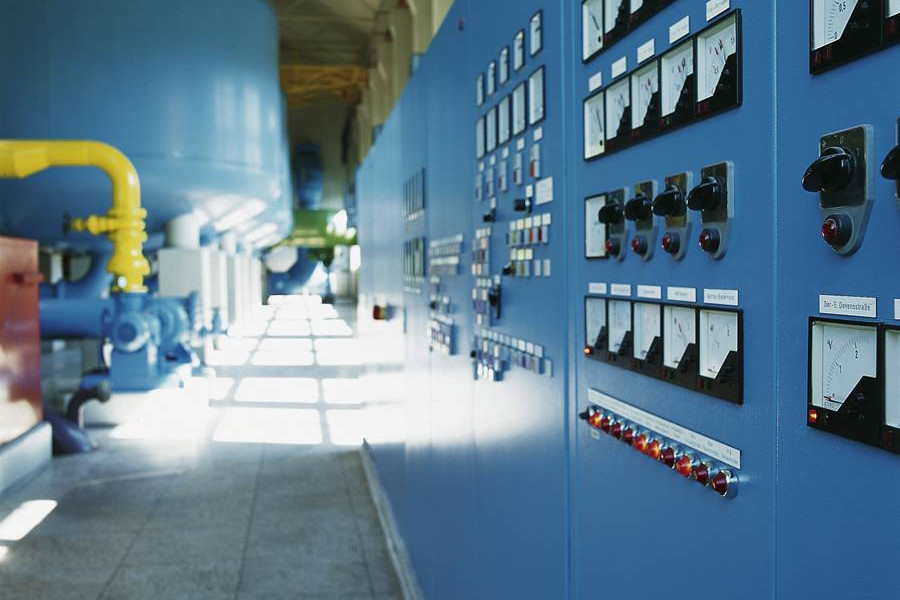

Applied research in the DVGW
For a secure and sustainable water supply
DVGW water research is divided into three thematic areas that will be relevant for water supply in the future: Substances, Systems and Technologies. Each thematic area contains three focus areas, each with detailed research on practical water supply topics.

Innovative ideas about the design of new technical products or procedures applied in the lab are merely a first step on the road to a successful application. The complexity of the process required to implement such ideas in real life is frequently underestimated.
Innovative ideas about the design of new technical products or procedures applied in the lab are merely a first step on the road to a successful application. The complexity of the process required to implement such ideas in real life is frequently underestimated. Questions about supply reliability or about the service life of components play a special role in this context. A lot of research work is still required in this particular area before new technical solutions can be implemented in real waterworks.
Almost all water treatment methods produce residual substances. Future water suppliers will most probably have to meet stricter environmental regulations and face more stringent requirements on residual substances management. Consequently, solutions aimed at avoiding the production of residual substances are of the greatest interest, and the potential for a circular economy needs to be assessed. Modern treatment techniques such as, for example, the membrane technique, offer opportunities to implement such solutions in real waterworks.
Established treatment methods will remain part and parcel of everyday practice in future waterworks, however under changed framework conditions caused by, for instance, changed drinking water quality requirements or a rise in temperature due to climate change. This calls for new approaches and solutions as well as for adjusting the current technical rules.

Drinking water is the most important foodstuff in Germany. Protecting its quality is one of the top priority tasks for the water industry and for water researchers.
Drinking water is the most important foodstuff in Germany. Protecting its quality is one of the top priority tasks for the water industry and for water researchers. New research methods offer enhanced capabilities to detect substances and microorganisms. They provide better insights into the quality of drinking water on the one hand, but on the other they also present new questions about e.g. the relevance of the newly discovered substances and microorganisms, and about how to deal with them.
The persistence, mobility and toxicity of these substances and microorganisms need to be evaluated (PMT criteria), and more advanced analysis methods are required to demonstrate their presence. Setting up and managing a database that contains information and guidance is an indispensable basis for well-informed evaluation; last but not least, standards taking into account the specific water supply requirements are required for the approval of substances.
The scope of screening should be limited in order to manage the vast number of newly found substances, e.g. by analysing only regionally present substances. Specific minimisation and avoidance strategies can make sense for a variety of groups of substances.
Clean resources constitute the basis for supplying high-quality drinking water. Resource management and protection are crucial in this context, but conflicting targets have been persisting for decades in the form of problems caused by the pollution of groundwater with nitrate. It is difficult to make other players accept demands for protection, however; furthermore, new challenges have surfaced as more people move to live in cities and as resource-use conflicts intensify in metropolitan areas. These and similar conflicts may be resolved by guidelines that combine the technical and legal sectors and offer suitable operationalisation proposals. Analysing case examples and identifying procedural weaknesses will yield the necessary knowledge; any findings gained can be used for developing a risk management strategy.
New substances in the environment mean that water suppliers have to meet new requirements. Likewise, they are faced with new problems relating to microbiology and/or molecular biology. The utilities therefore have to characterise their raw water quality and, at the same time, ensure sufficient transparency for their customers. Polar substances and contaminants such as microplastics, antibiotic resistance genes or algal toxins call for special attention during the water treatment process. Both the chemical composition of these substances as well as the microbiological and biological methods of analysis are relevant. In this context, however, there is a dearth of knowledge about the impact that energy saving measures and lower temperatures may have on hot water systems.
The water industry envisages as its ultimate goal a durable drinking water installation that has the lowest possible impact on drinking water quality. This poses further challenges like e.g. the limited understanding of certain processes caused by some corrosion phenomena; forecasting and assessing the stability of new materials; effects brought about by changes in water quality (e. g. by water changes) and a lack of transparency and available data about the use and suitability of materials.

Modern water supply infrastructures require high levels of flexibility and supply reliability, which carry in their wake cost increases. Asset management therefore requires combining operational safety and efficiency.
Modern water supply infrastructures require high levels of flexibility and supply reliability, which carry in their wake cost increases. Asset management therefore requires combining operational safety and efficiency. In this context, operation in different tariff situations – comparable to system demand control in the energy sector (demand response) – can be just as helpful as demand-based inspection (including data management, real-time analysis), plant condition evaluation (including material testing) and tailored investment and depreciation models.
Safeguarding and ensuring the supply of drinking water to domestic and industrial properties is one of the fundamental tasks of the water sector. Any meaningful risk assessment of supply reliability consequently includes costs and customer expectations as well as peak demand management. A clear distinction is made between resilience against natural incidents such as, for instance, extreme weather phenomena, and third-party interference (e. g. IT security or threats). During natural incidents the heating up of resources and/or the drinking water plays a significant role for distribution.
Operationally safe components and systems and adequate capacities are fundamental in ensuring the reliable supply of drinking water. Intelligent capacity management may, in turn, create new fields of business (water on demand).
Digitisation offers a wide range of tools that enhance the options of the water industry: distributed data acquisition; transmission and integration of vast amounts of data; automated analyses and the visualisation or simulation and optimisation of scenarios. There is huge potential for using digital data for decision-making and management processes - almost in real time.
This helps to improve and optimise both the economic efficiency and flexibility of the water supply industry. Likewise, digitisation creates new customer expectations with regard to the availability of digital services, the possibility to interact through new media and the handling of personalised data.